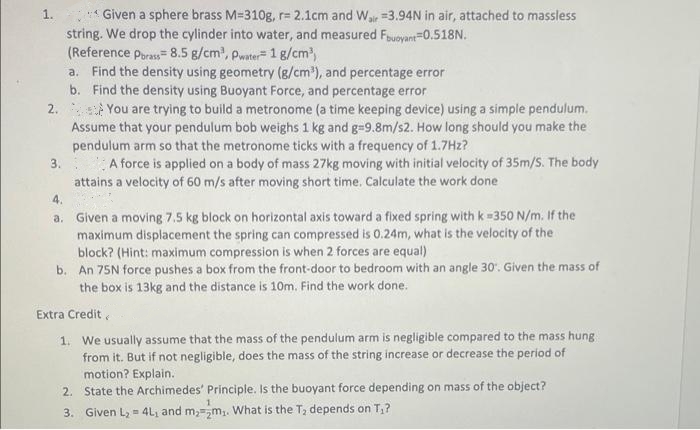1. Given a sphere brass M-310g, r= 2.1cm and War 3.94N in air, attached to massless string. We drop the cylinder into water, and measured Fbuoyant 0.518N. (Reference Porass 8.5 g/cm³, Pwater 1 g/cm³) a. Find the density using geometry (g/cm³), and percentage error b. Find the density using Buoyant Force, and percentage error 2. You are trying to build a metronome (a time keeping device) using a simple pendulum. Assume that your pendulum bob weighs 1 kg and g=9.8m/s2. How long should you make the pendulum arm so that the metronome ticks with a frequency of 1.7Hz? A force is applied on a body of mass 27kg moving with initial velocity of 35m/S. The body attains a velocity of 60 m/s after moving short time. Calculate the work done
Fluid Pressure
The term fluid pressure is coined as, the measurement of the force per unit area of a given surface of a closed container. It is a branch of physics that helps to study the properties of fluid under various conditions of force.
Gauge Pressure
Pressure is the physical force acting per unit area on a body; the applied force is perpendicular to the surface of the object per unit area. The air around us at sea level exerts a pressure (atmospheric pressure) of about 14.7 psi but this doesn’t seem to bother anyone as the bodily fluids are constantly pushing outwards with the same force but if one swims down into the ocean a few feet below the surface one can notice the difference, there is increased pressure on the eardrum, this is due to an increase in hydrostatic pressure.

Trending now
This is a popular solution!
Step by step
Solved in 2 steps with 4 images








